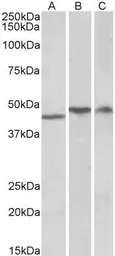TDP43 antibody, Internal
Cat. No. GTX88503
Cat. No. GTX88503
-
HostGoat
-
ClonalityPolyclonal
-
IsotypeIgG
-
ApplicationsWB
-
ReactivityHuman

